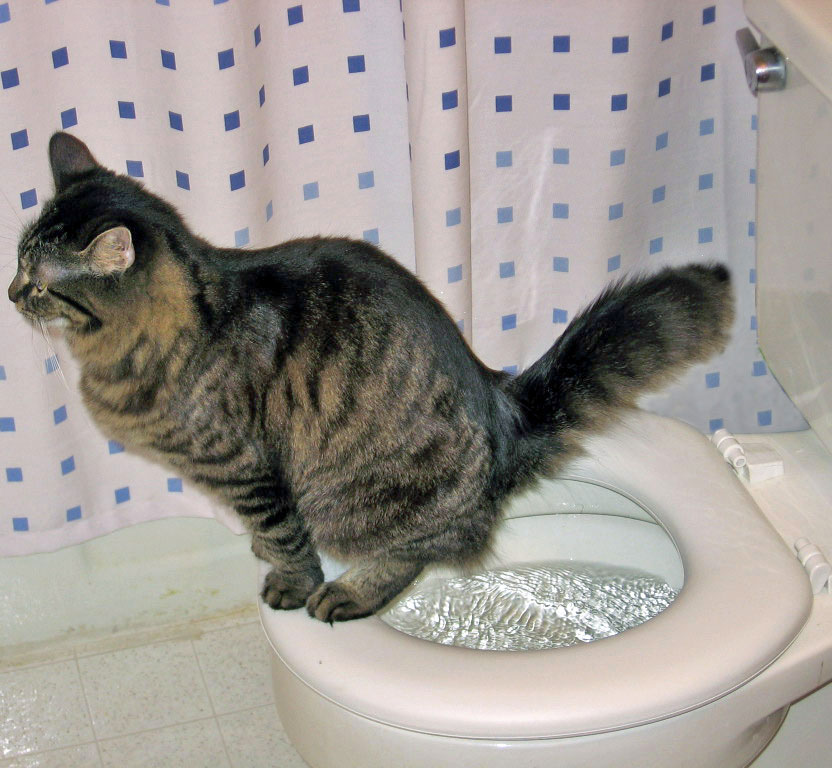Potential Issues of Flushing Cat Poop Down Your Toilet - Safeguard Your Plumbing
Potential Issues of Flushing Cat Poop Down Your Toilet - Safeguard Your Plumbing
Blog Article
Every person has got their unique piece of advice about How to Dispose of Cat Poop and Litter Without Plastic Bags.

Intro
As feline owners, it's important to be mindful of how we deal with our feline friends' waste. While it might appear convenient to flush feline poop down the commode, this method can have harmful consequences for both the atmosphere and human health.
Alternatives to Flushing
Fortunately, there are more secure and more responsible ways to dispose of cat poop. Take into consideration the complying with choices:
1. Scoop and Dispose in Trash
One of the most common approach of taking care of pet cat poop is to scoop it into an eco-friendly bag and toss it in the garbage. Make sure to utilize a specialized trash scoop and deal with the waste promptly.
2. Use Biodegradable Litter
Choose biodegradable feline trash made from materials such as corn or wheat. These clutters are eco-friendly and can be securely thrown away in the garbage.
3. Hide in the Yard
If you have a lawn, think about burying cat waste in an assigned area far from vegetable gardens and water resources. Make sure to dig deep sufficient to stop contamination of groundwater.
4. Mount a Pet Waste Disposal System
Invest in a pet waste disposal system especially created for feline waste. These systems make use of enzymes to break down the waste, lowering smell and environmental influence.
Health and wellness Risks
Along with ecological issues, purging cat waste can also present wellness threats to humans. Feline feces might contain Toxoplasma gondii, a parasite that can trigger toxoplasmosis-- a possibly severe illness, especially for expectant women and people with weakened immune systems.
Environmental Impact
Flushing feline poop introduces harmful microorganisms and parasites into the water supply, posing a substantial threat to marine communities. These contaminants can negatively impact aquatic life and concession water high quality.
Verdict
Liable animal possession extends past providing food and sanctuary-- it likewise includes correct waste management. By avoiding flushing pet cat poop down the toilet and going with different disposal methods, we can reduce our ecological impact and safeguard human wellness.
Why Can’t I Flush Cat Poop?
It Spreads a Parasite
Cats are frequently infected with a parasite called toxoplasma gondii. The parasite causes an infection called toxoplasmosis. It is usually harmless to cats. The parasite only uses cat poop as a host for its eggs. Otherwise, the cat’s immune system usually keeps the infection at low enough levels to maintain its own health. But it does not stop the develop of eggs. These eggs are tiny and surprisingly tough. They may survive for a year before they begin to grow. But that’s the problem.
Our wastewater system is not designed to deal with toxoplasmosis eggs. Instead, most eggs will flush from your toilet into sewers and wastewater management plants. After the sewage is treated for many other harmful things in it, it is typically released into local rivers, lakes, or oceans. Here, the toxoplasmosis eggs can find new hosts, including starfish, crabs, otters, and many other wildlife. For many, this is a significant risk to their health. Toxoplasmosis can also end up infecting water sources that are important for agriculture, which means our deer, pigs, and sheep can get infected too.
Is There Risk to Humans?
There can be a risk to human life from flushing cat poop down the toilet. If you do so, the parasites from your cat’s poop can end up in shellfish, game animals, or livestock. If this meat is then served raw or undercooked, the people who eat it can get sick.
In fact, according to the CDC, 40 million people in the United States are infected with toxoplasma gondii. They get it from exposure to infected seafood, or from some kind of cat poop contamination, like drinking from a stream that is contaminated or touching anything that has come into contact with cat poop. That includes just cleaning a cat litter box.
Most people who get infected with these parasites will not develop any symptoms. However, for pregnant women or for those with compromised immune systems, the parasite can cause severe health problems.
How to Handle Cat Poop
The best way to handle cat poop is actually to clean the box more often. The eggs that the parasite sheds will not become active until one to five days after the cat poops. That means that if you clean daily, you’re much less likely to come into direct contact with infectious eggs.
That said, always dispose of cat poop in the garbage and not down the toilet. Wash your hands before and after you clean the litter box, and bring the bag of poop right outside to your garbage bins.
https://trenchlesssolutionsusa.com/why-cant-i-flush-cat-poop/

Do you really like reading about How to Dispose of Cat Poop and Litter Without Plastic Bags? Try to leave feedback directly below. We would be delighted to hear your feelings about this content. Hoping to see you back again before long. Make sure you take a moment to distribute this write-up if you enjoyed reading it. Thanks a lot for going through it.
Call Today Report this page